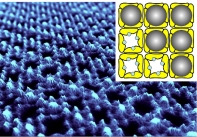
1Center for NanoBiotechnology and University of Natural Resources and Applied Life Sciences, Gregor Mendel St. 33, A-1180 Wien, Austria, and
2Air Force Research Laboratory, Materials and Manufacturing Directorate
e-mail: christina.altmutter@boku.ac.at
